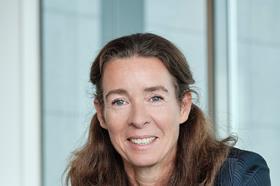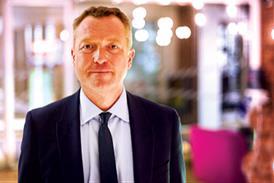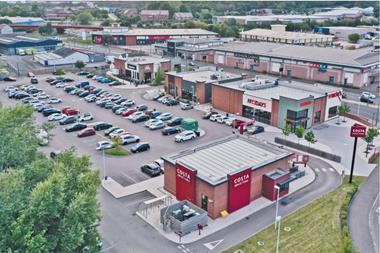It’s an interesting time for real estate investors, one we may look back at as Darwinian – in some ways comparable to the survival of the fittest. Choices made today with respect to sustainability investments, tenant relationships and viable operating models will be critical to how the industry evolves and which market participants will survive.

The passive ownership model, assuming property will generate contractual long-term rental income returns, is fast becoming a thing of the past. Forward-thinking investors today are adopting active ownership approaches to all real estate sectors. Recognising the impact of the rapidly changing market environment on different regions, markets, asset classes and, above all, tenant demand and the likelihood of survival is crucial. Only then can investment and management strategies be optimised accordingly.
How assets are managed can contribute to their occupants’ wellbeing and business models. This needs to be understood and actioned to ensure long-term sustainable income and value from these assets for owners. Crucially, there is a need for a client-centric approach that seeks to understand what role assets and offered services can play, ‘solving’ demands from – and accommodating prevalent trends in – society and business.
It is also necessary to access the best investment strategies that can benefit from solving a specific demand or accommodating a trend. The chosen structure of the real estate investment, whether direct or indirect, via loans or in the listed market, should depend on relative value, governance preference, opportunity and access to the best operators to deliver the best performance for investors.
Owners and managers should focus on three key areas at the asset and portfolio level, as well as investing and management. An ‘SOS’ approach – that is sustainability, operational excellence and solutions that allow flexible contractual formats and investment structures to keep pace with rapidly changing market circumstances and long-term trends.
A proactive, operational, hospitality-like approach that allows for flexible terms to service tenants and optimises income should enable a virtuous circle, allowing the owner to benefit from the upside.
Sustainability and operational excellence are more closely linked at the asset level than many appreciate. Real estate’s physical nature means investors can adapt and reposition assets to ensure they can be operated efficiently and remain relevant as the world modernises.
This means minimising the use of resources like water and electricity while reducing waste and carbon emissions. It also means contributing positively to tenants’ business models and the ultimate occupiers’ wellbeing. Pursuing such efficiency might need additional services, more intense management on the ground and/or additional capital expenditure. When truly integrated, the long-term relevance of the assets is preserved for occupiers, while the occupier business model is supported. The consequence is long-term sustainable income and financial returns for owners.
Including more flexible, operationally aligned income clauses in contracts makes many real estate investors and traditional bankers nervous. The view is that the income is inherently riskier if it is not a bond-type, long-term lease contract.
Our view, however, is that the owner is already exposed to a tenant’s business not working well in the current environment. A proactive, operational, hospitality-like approach that allows for flexible terms to service tenants and optimises income should enable a virtuous circle, allowing the owner to benefit from the upside.
Supporting tenants with greater flexibility means more volatile market conditions are more survivable. It helps tenants deal with higher costs – such as energy; higher interest rates; increasing regulations, including sustainability; and changing societal demands. A partnership approach will optimise long-term sustainable income and value for both parties. Bankruptcies, vacancy and obsolescence are prevented.
The SOS approach can also be applied to selecting investments and portfolio construction. The same themes apply: align investments with sustainable trends and carefully assess which market segments offer the best relative value using a consistent risk/return framework. Then focus on operational excellence in the local execution partner. Lastly, different structured solutions should be considered to best cater to governance preferences, duration of the perceived investment opportunity, liquidity needs and market timing fitting the investment strategy to create optimal investment performance.
Sophie van Oosterom is global head of real estate at Schroders Capital
































No comments yet